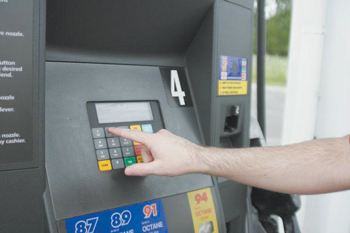 This week, our publisher, Bill Bowman yields his space to Jimmy Jones, a regular contributor to Up & Coming Weekly and a COVID-19 survivor.
This week, our publisher, Bill Bowman yields his space to Jimmy Jones, a regular contributor to Up & Coming Weekly and a COVID-19 survivor.This is a fluid situation. I am not a doctor, and this is my observation and opinion.
Full disclosure: I tested positive for COVID-19. I am doing fine and have been cleared by the health department. With that, my perspective on this situation is a little different.
According to the Centers for Disease Control and Prevention’s website, https://www.cdc.gov/, “In the coming months, most of the U.S. population will be exposed to this virus.” Scientists are saying that anyone can transmit the virus, and they may not have symptoms.
“Stay home, stay safe.” “Stay home, save lives.” The stay at home orders issued by government leaders are telling us that life will be good if we do what they say. This virus is here, and it will continue to spread until a vaccine is created or our bodies can fight it off and build immunity. Scientists also believe warm weather may weaken the virus’s chemical makeup.
The president’s COVID-19 task force estimates 100,000 to 240,000 deaths in the next few weeks as the projected curve peaks before flattening. Staying in place and social distancing have been put into place to slow the mass numbers of victims that would overload first responders and the health care systems and protect and preserve resources. If a medical system gets overloaded, someone will have to make the terrible choice of who gets those resources. Even with medical support, there are no guarantees that you will survive. The flattening of the curve by social distancing is more of a statistical calculation to minimize risk.
On average, there are 7,500 deaths a day in the U.S. When official count COVID-19 deaths, they do not tell us if there are contributory factors. If a person has pneumonia and gets COVID-19 and dies, they are counted as COVID-19 deaths. That person may have been near death anyway, and the virus accelerated the inevitable. On the flip side, there may be fewer deaths from car accidents with fewer people driving, but we may see a spike in suicides and murders as the stress and economy continue to spiral.
Where do our civil liberties end and where does public safety begin? If the Centers for Disease Control and Prevention is correct and most of us will get COVID-19, why are our leaders closing businesses, shutting down public areas and putting up curfews? If social distancing is the solution, are our leaders just putting ordnances in place because they think that we are not smart enough to judge 6 feet, or are they doing this to show they have authority over us?
In North Carolina, Governor Cooper decided to shut the state down. As of this writing, Cumberland County has had 18 cases and zero deaths. By the time of print, these numbers will change.
The city of Fayetteville now has a curfew in place. According to the ABC-11 website, Mayor Mitch Colvin stated this was about addressing “any of the gaps the current order doesn’t address.” Later in the article, he is quoted as saying, “I’ve been getting a lot of people who’ve been sending pictures of social gatherings at ATV parks or other individual activities.” Umm, there are no ATV parks in the city of Fayetteville.
Hope Mills authorities have closed the Hope Mills Lake, but they are allowing kayaking and boating until 6 p.m. Fishing is not permitted, but you can still get a good hot dog at Big-Ts. Access to the Municipal Park and Golfview Greenway walking trails are opened until 6 p.m. If fishing and walking are such a public hazard, then I suggest they drain the lake and make everyone tie their shoestrings together.
People are working to be safer. Maybe through this, we can learn how to be a little more considerate by not going to work sick and coughing on people and steering clear of folks when we are sick.
Stores are starting to install plexiglass to protect the cashier, but you still have to use the credit card machine and touch it. Same goes for ATMs and gas pumps.
Per the Centers for Disease Control and Prevention’s “Disposition of Non-Hospitalized Patients with COVID-19,” the decision to discontinue home isolation should be made in the context of local circumstances. There are two options: 1) a time-since-illness-onset and time-since-recovery strategy. This means at least 72 hours have passed since recovery, which is defined as resolution of fever without the use of fever-reducing medications and improvement in respiratory systems (e.g., cough, shortness of breath), and, at least seven days have passed since symptoms first appeared. 2) Test-based strategy. If a test is available, it can tell you if you still have an active virus.
As more people like myself get cleared, and our bodies are considered immune, why can’t we get those people back to work and back to enjoying life? The health department is tracking positive cases. A business should use cleared people to work jobs that are high risk. It would take some of the stress off those not so fortunate and help to get the economy and markets back up and running and instill hope in the American people.
Over the next few weeks, we will all ride this curve. I hope people will look to the other side of this with a more precise picture so we can move on.
Fun fact: 6 feet is the same height as a typical refrigerator. Imagine it laid down and stay that far away from someone. OK, we should be able to get on with our lives better.